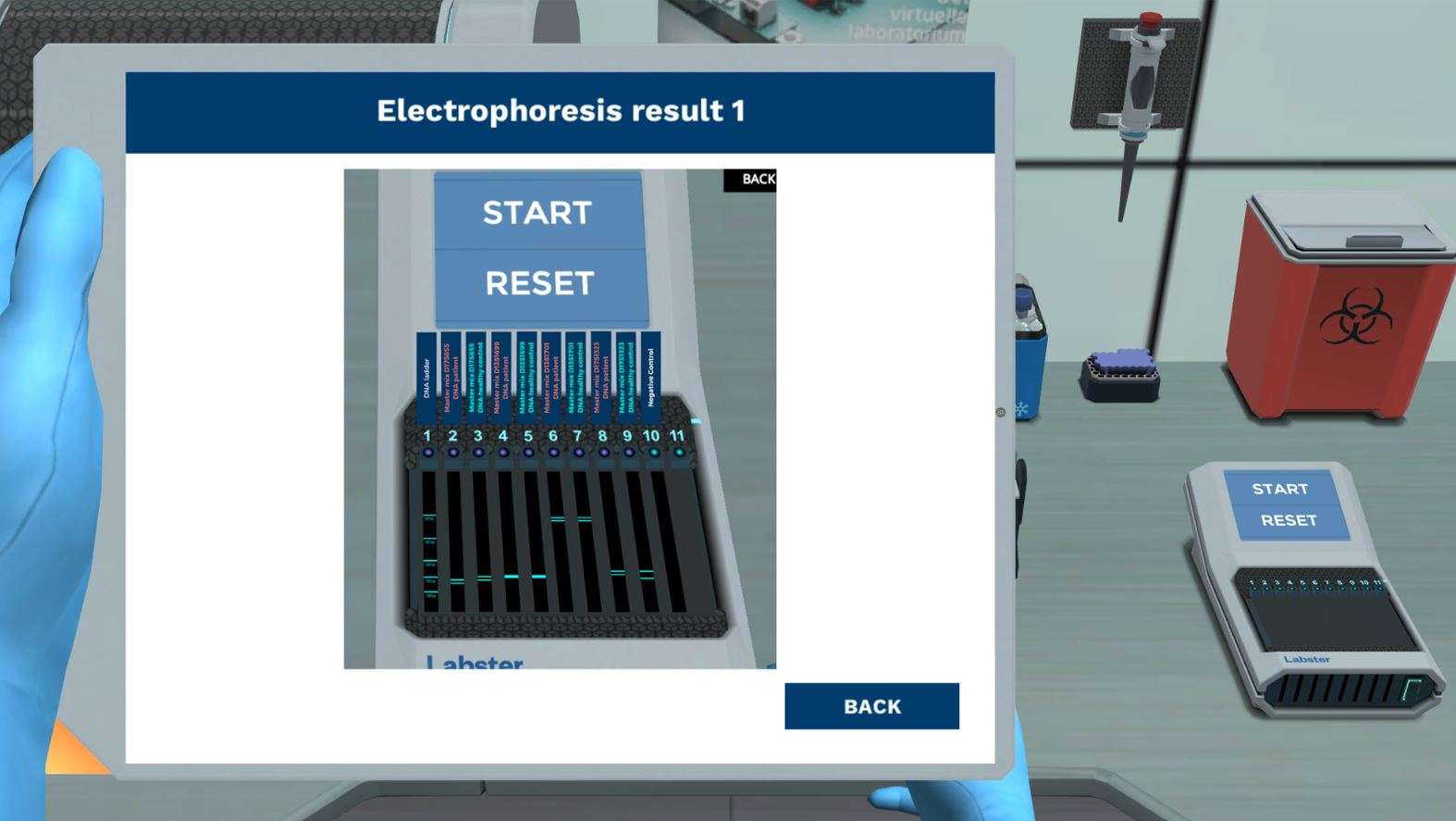Heading 1
Heading 2
Heading 3
Heading 4
Heading 5
Heading 6
Lorem ipsum dolor sit amet, consectetur adipiscing elit, sed do eiusmod tempor incididunt ut labore et dolore magna aliqua. Ut enim ad minim veniam, quis nostrud exercitation ullamco laboris nisi ut aliquip ex ea commodo consequat. Duis aute irure dolor in reprehenderit in voluptate velit esse cillum dolore eu fugiat nulla pariatur.
Block quote
Ordered list
- Item 1
- Item 2
- Item 3
Unordered list
- Item A
- Item B
- Item C
Bold text
Emphasis
Superscript
Subscript
About This Simulation
Put yourself in the place of a genetic counselor and find out if the daughter of a breast cancer patient is at a higher risk of developing breast cancer herself. Help her by constructing a pedigree and finding the defective gene by using linkage analysis.
Learning Objectives
- Construct a pedigree using a polymerase chain reaction derived data
- Interpret the relationship between specific genetic mutations and cancer development risk
About This Simulation
Lab Techniques
- Pedigree/ linkage analysis
- Pedigree trees
Related Standards
- Early Stage Bachelors Level
- Early Stage Masters Level
- EHEA First Cycle
- US College Year 1
- US College Year 2
- US College Year 3
- US College Year 4
- Biology Unit 5.4
- Biology 3.1
Learn More About This Simulation
This short, targeted simulation is adapted from the full-length Medical Genetics simulation.
Did you know you can easily check if you have a small mutation in your BRCA1 or BRCA2 that can make you more likely to develop breast cancer? In this simulation, you will learn to construct a pedigree based on the acquired data from the DNA of the patient and discover the potential relationship between mutations and cancer development risk but using linkage analysis.
Constructing pedigree
Your first task is to construct a family pedigree based on the gathered information. You will learn how to read a family pedigree and determine whether or not traits are hereditary. You will visit the hospital and talk with a doctor to learn about hereditary cancer and identify genes, such as BRCA1 and BRCA2 that can cause hereditary breast cancer in a family.
Linkage analysis
Next, you will arrive in the laboratory to start your experiments. You will begin with a linkage analysis using four microsatellite markers that are located close to BRCA1 and BRCA2 genes. Then you will perform a PCR to amplify the microsatellite markers and interpret the results by using gel electrophoresis.
Analyze the pedigree
In the end, by using the gel electrophoresis results, you will analyze the genotypes from family members. Will you be able to determine which gene is linked to hereditary breast cancer in this family?
Boost STEM Pass Rates
Boost Learning with Fun
75% of students show high engagement and improved grades with Labster
Discover Simulations That Match Your Syllabus
Easily bolster your learning objectives with relevant, interactive content
Place Students in the Shoes of Real Scientists
Practice a lab procedure or visualize theory through narrative-driven scenarios


For Science Programs Providing a Learning Advantage
FAQs
Find answers to frequently asked questions.
Heading 1
Heading 2
Heading 3
Heading 4
Heading 5
Heading 6
Lorem ipsum dolor sit amet, consectetur adipiscing elit, sed do eiusmod tempor incididunt ut labore et dolore magna aliqua. Ut enim ad minim veniam, quis nostrud exercitation ullamco laboris nisi ut aliquip ex ea commodo consequat. Duis aute irure dolor in reprehenderit in voluptate velit esse cillum dolore eu fugiat nulla pariatur.
Block quote
Ordered list
- Item 1
- Item 2
- Item 3
Unordered list
- Item A
- Item B
- Item C
Bold text
Emphasis
Superscript
Subscript
Labster can be integrated within a school's LMS (Learning Management System), and students can access it like any other assignment in their LMS. If your Institution does not choose an LMS integration, students will log in to Labster's Course Manager once they have an account created. Your institution will decide the access method during the sales process.
Labster is available for purchase by instructors, faculty, and administrators at education institutions. Purchasing our starter package, Labster Explorer, can be done using a credit card if you are located in the USA, Canada, or Mexico. If you are outside of North America or are choosing a higher plan, please speak with a Labster sales representative. Compare plans.
Labster simulations are created by real scientists and designed with unparalleled interactivity. Unlike point and click competitors, Labster simulations immerse students and encourage mastery through active learning.
Labster supports a wide range of courses at the high school and university level across fields in biology, chemistry and physics. Some simulations mimic lab procedures with high fidelity to train foundational skills, while others are meant to bring theory to life through interactive scenarios.


















